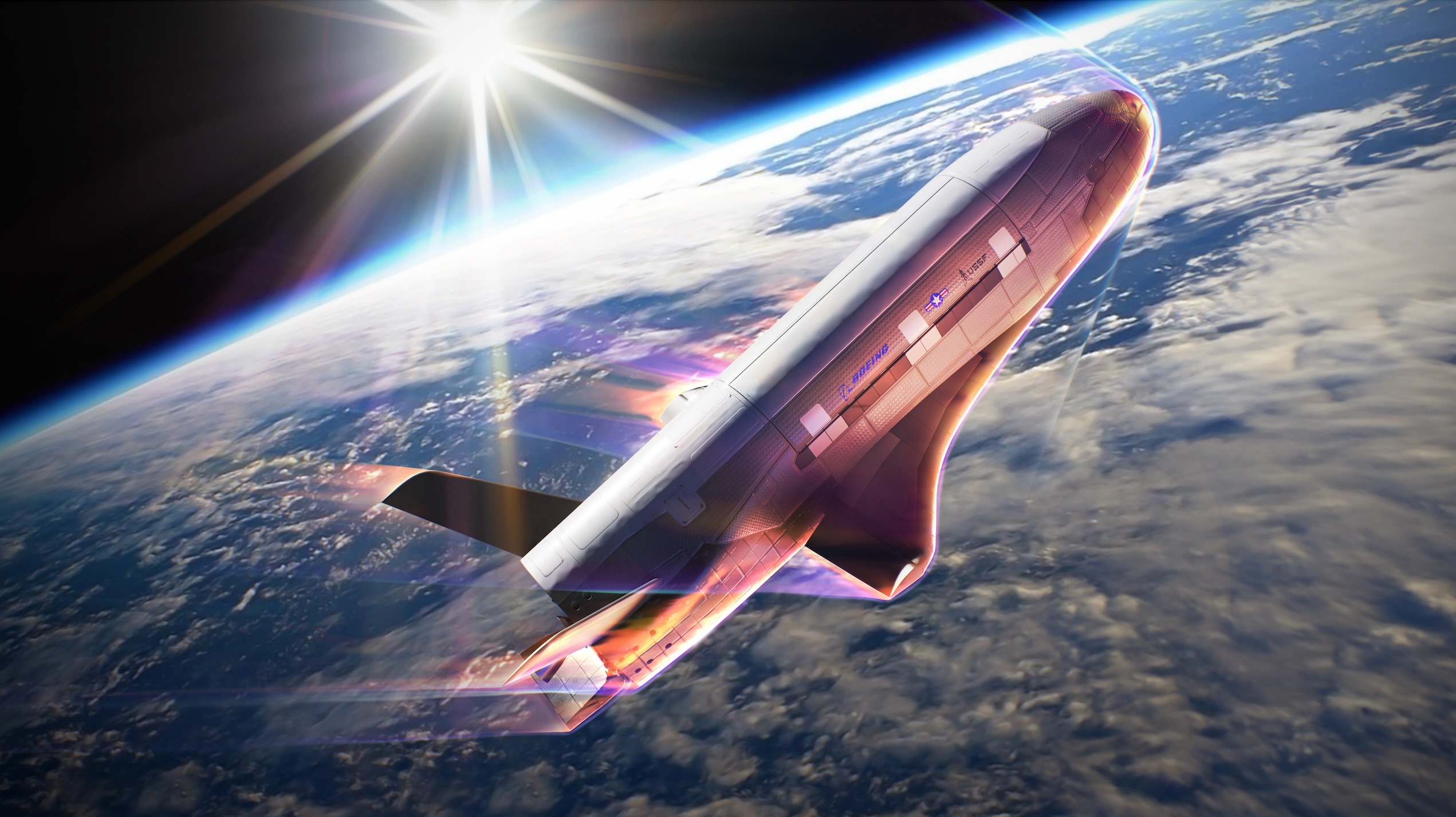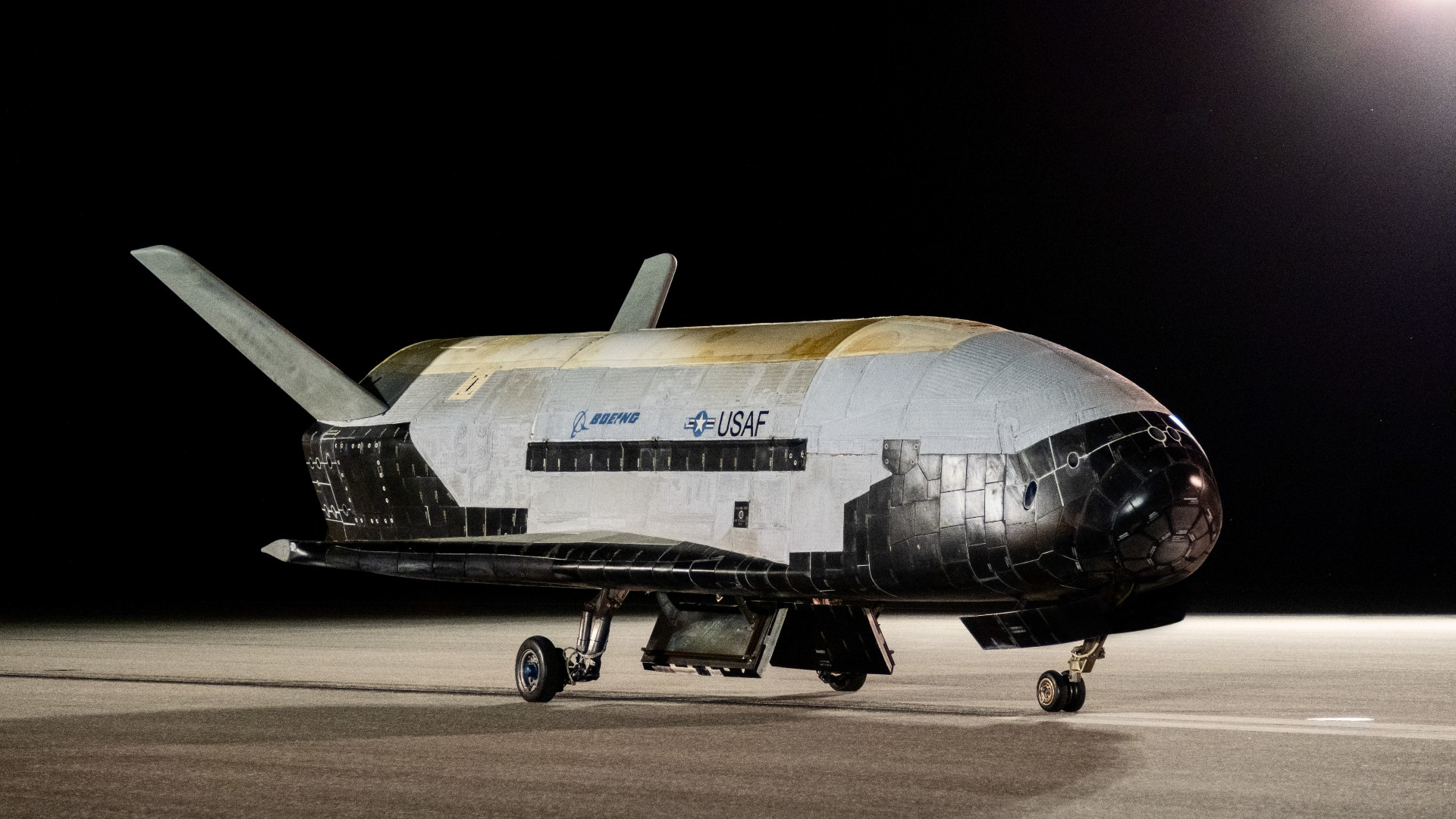Space Force's mysterious X-37B space plane to attempt new 'aerobraking' maneuvers in orbit
'This novel and efficient series of maneuvers demonstrates the Space Force's commitment to achieving groundbreaking innovation as it conducts national security missions in space.'

The U.S. military's X-37B space plane is about to begin a series of novel maneuvers, according to a rare official update on the spacecraft.
The robotic X-37B has been in a highly elliptical, undisclosed orbit for 10 months since launching on its seventh mission on a SpaceX Falcon Heavy rocket in late December last year.
The space plane has been conducting radiation-effect experiments and has been testing Space Domain Awareness technologies, but will now start using Earth's atmosphere to change its orbit.
The series of aerobraking maneuvers utilize drag from Earth's atmosphere. This will help lower the X-37B's orbit, from its current elliptical high Earth orbit, while using minimal fuel, Space Force officials said.
Once in a lower and more circular orbit, the space plane will then jettison its service module components. This means the components will remain in orbit for a much shorter period of time than if jettisoned in high Earth orbit, thus meeting recognized standards for space debris mitigation.
Related: The US Space Force's secretive X-37B space plane: 10 surprising facts
"This novel and efficient series of maneuvers demonstrates the Space Force's commitment to achieving groundbreaking innovation as it conducts national security missions in space," Frank Kendall, Secretary of the U.S. Air Force, said in a statement.
Get the Space.com Newsletter
Breaking space news, the latest updates on rocket launches, skywatching events and more!
It will be the first time the X-37B performs dynamic aerobraking maneuvers. The Space Force says the tests build on previous X-37B missions, as well as decades of general lessons learned from the scientific community conducting moon and Mars missions.

Chief of Space Operations Gen. Chance Saltzman added that the X-37B maneuvers are an "incredibly important milestone for the United States Space Force as we seek to expand our aptitude and ability to perform in this challenging domain."
Following the aerobraking maneuvers, the X-37B will resume its test and experimentation objectives, according to the statement. The space plane will then de-orbit and land, as is done on its six previous missions.
The current X-37B flight is known as OTV-7 ("Orbital Test Vehicle-7"). The space plane first launched atop a United Launch Alliance Atlas V rocket back in 2010. The mission just before OTV-7 launched on a SpaceX Falcon 9 and stayed in orbit for 908 days. China recently landed its own secretive reusable space plane after a 268-day mission.
Join our Space Forums to keep talking space on the latest missions, night sky and more! And if you have a news tip, correction or comment, let us know at: community@space.com.

Andrew is a freelance space journalist with a focus on reporting on China's rapidly growing space sector. He began writing for Space.com in 2019 and writes for SpaceNews, IEEE Spectrum, National Geographic, Sky & Telescope, New Scientist and others. Andrew first caught the space bug when, as a youngster, he saw Voyager images of other worlds in our solar system for the first time. Away from space, Andrew enjoys trail running in the forests of Finland. You can follow him on Twitter @AJ_FI.









